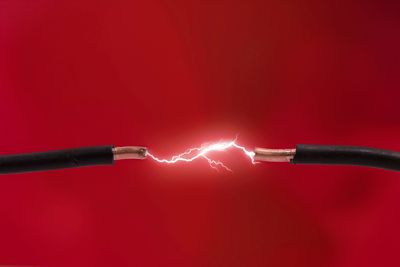A magazine where the digital world meets the real world.
On the web
- Home
- Browse by date
- Browse by topic
- Enter the maze
- Follow our blog
- Follow us on Twitter
- Resources for teachers
- Subscribe
In print
What is cs4fn?
- About us
- Contact us
- Partners
- Privacy and cookies
- Copyright and contributions
- Links to other fun sites
- Complete our questionnaire, give us feedback
Search:
Complete circuit

Follow the circuit
1. Kirchhoff's famous circuit laws describe the conservation of charge and energy in electrical circuits. They form the basis for circuit design as well, leading to many a homework assignment working out the current at different places in a circuit. Their creator, physicist Gustav Kirchhoff, was born in the town of Koenigsberg in what is now Russia.
2. Koenigsberg sits on several islands originally connected by seven bridges. It was this town plan that helped mathematician Leonhard Euler to pose and solve the famous Seven Bridges of Koenigsberg Problem. It helped develop the useful mathematical area called graph theory.
3. Graph theory is used by engineers when building mobile phone networks. Your mobile phone finds the nearest base station and locks onto it to send and receive information. Researchers recently revealed a midget drone plane called WASP, built on the cheap with parts bought on the Internet. It could fly unseen over a city mimicking a 'local tower' to intercept phone messages and wi-fi data.
4. Wi-fi is a set of agreed standards that allow radio links between all manner of electronic gadgets. These worldwide rules are based around the idea of 'frames'. Frames contain the data that is to be sent or received in a particular format. Devices have to know these rules of conversation to talk to each other. They range from asking nicely in the 'association request frame' if the receiver is ready, willing and able to connect, to the 'association response frame' where the receiver answers "yes" or "no".
5. Yes or no is an example of a binary encoding: only two options exist. Many electronic devices these days use binary coding. The signal has only two possible values. That makes turning them mathematically into numbers and the subsequent calculations easier and more accurate. Analogue electronics, where voltage and currents can vary across a range of values are more difficult to design but are still useful in some applications. They can have surprising advantages. For example, before digital radio took over it was possible to build a working 'crystal radio set' using analogue techniques with simple household items like wire and a rusty nail. This radio was powered by the radio waves and didn't need batteries.
6. Batteries store energy and many see them as a big unsolved problem of electronics. They are heavy, need space and charging, and when they run out your gadget stops. Researchers are now looking at using common everyday stuff like plastics and concrete to store the energy we need. Another idea is to use energy from our walking on the go. Whatever way energy is created and stored in the future, it will still swirl round the circuit obeying Kirchhoff's laws.
GO TO 1


